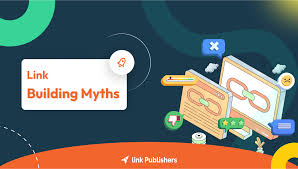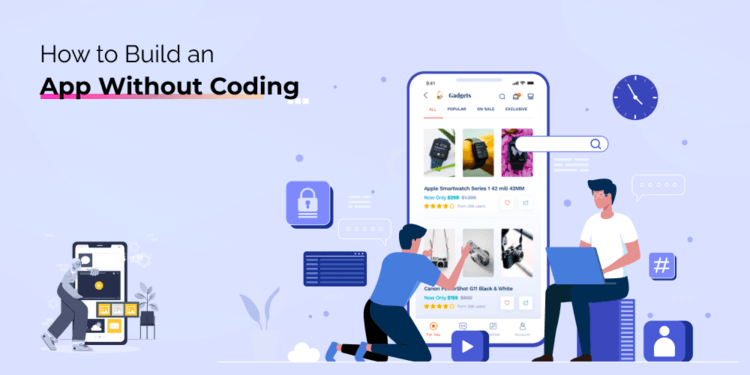AI has taken the tech industry by storm, and one of its most exciting innovations is ChatGPT.
Traditional mobile app development techniques involve complex coding skills that were a kinda barrier for newbies. ChatGPT makes it easy for less tech-savvy individuals to utilize natural language understanding for their next mobile app.
On the good side, these intelligent tools allow users to build conversational interfaces, automate responses, and deliver personalized experiences. In this write-up, we will guide you through the process of building an app powered by ChatGPT using no-code tools.
What is ChatGPT and Why Should You Use It?
ChatGPT from OpenAI is an advanced conversational AI that understands and responds to text-based queries just like humans would, making it perfect for creating chatbots, virtual assistants, or content generation tools with intuitive functionality that understand user input and generate intelligent responses in human-like fashion – such as:
- Answer user questions.
- Assist in tasks like scheduling or reminders.
- Provide product recommendations or support.
- Generate creative content like blog posts, emails, or social media captions.
The best part? You dont have to be a coding expert for using it.
How to Start Mobile App Development with ChatGPT
1. Decide the Purpose of Your App
The mobile app development process with ChatGPT starts with understanding the type of app you are to work for. ChatGPT is capable of helping you with diverse mobile apps. Here are possible ways you may use it:
- Customer Support Chatbot to answer frequently asked questions or troubleshoot issues.
- Personal Assistant to schedule tasks, set reminders, and find relevant information.
- Content Creation Tool to help generate articles, social media posts, and product descriptions.
- Language Translator will build a multilingual app with ChatGPT to help users translate text in real-time.
2. Opt for a No-Code App Builder
A lot of individuals find it tough to deal with lengthy codes related to mobile app development. However, a good thing is that there are several platforms that help you eliminate the need for coding. They have easy drag-and-drop interfaces to design your app, and a lot of them support integration with APIs like OpenAI’s ChatGPT. These are a few popular no-code apps that you must consider:
- Bubble: This is a powerful no-code platform where you can create web apps and integrate APIs.
- Adalo: Adalo is a useful platform for mobile app development that allows you to integrate external APIs like ChatGPT.
- Glide: Ideal for building simple mobile apps, Glide lets you connect to APIs easily.
All of these platforms have tutorial videos and user-friendly guides to help you integrate ChatGPT regardless of technical expertise.
3. Sign Up for OpenAI API Access
ChatGPT requires access to OpenAI’s API; even no-code platforms such as ChatGPT require direct connections with OpenAI servers for optimal functioning; don’t be alarmed, though; signing up for API access is simple!
- Visit OpenAI’s website.
- Create an account.
- Once logged in, you get an API key that is a secure method for your app to communicate with OpenAI.
4. Integrate ChatGPT with Your App
Once you’ve selected and secured an API key for ChatGPT, the next step should be connecting it to your app. No-code platforms typically offer simple methods of linking external services – here is an outline of this process:
- API Connection: Most no-code platforms enable you to integrate APIs easily by pasting in an API key into a settings page or using their built-in connectors, usually provided by OpenAI. Furthermore, input parameters (for instance, the message you want ChatGPT to respond to) must also be entered so as to integrate ChatGPT fully.
- Set Up Chat Interface: Creating a user-friendly chat interface is critical when developing a chatbot or assistant app. No-code platforms often come equipped with premade templates you can modify for use within your app’s chat feature.
- Test and Adjust: After setting up, test and adjust ChatGPT so you know that its responses match user input. As needed, modify its tone, length or type based on feedback received from users.
Don’t fret over complex code; our no-code platform will take care of that while you focus on designing user experience for your app.
5. Design the User Interface
Apps should look and feel beautiful to users, which makes their user interface one of the key aspects to consider when developing them. With no-code platforms like ChatGPT’s node builder, nodes enable designers to easily drag-and-drop elements to create user interface designs for apps using node builds like ChatGPT. These tips may help ensure an efficient yet friendly UI is implemented for their app:
- Keep It Simple: Make sure the interface is clean and easy to navigate. The goal is for users to interact with the app intuitively, without confusion.
- Real-Time Interactions: Since ChatGPT is designed for real-time conversations, aim for a quick and smooth experience. Avoid any delays in response.
- Personalize: Consider allowing users to customize their chat experience—whether it’s choosing a friendly or formal tone or even adjusting the AI’s responses to suit different needs.
6. Test Your App
Before going live, make sure you test your app thoroughly. This is your chance to make sure everything is working as expected—does ChatGPT understand your prompts? Does it respond in a helpful way? Are there any issues with the user interface?
Participate in testing to gather user input and modify your app accordingly. Most no-code platforms enable instantaneous changes for improved app performance and user experiences.
7. Launch and Maintain Your App
Once everything is working perfectly, it’s time to launch your app. Your no-code platform should provide clear deployment instructions; after its release, observe users’ interactions and solicit feedback so you can make improvements as appropriate.
As you get more feedback, you can continue refining the app. Most no-code platforms allow you to make easy updates, so you can keep improving your app over time.
8. Monitor and Optimize Your App
Even once your app has launched, it is crucial to keep an eye on its performance. Study how users interact with it, identify pain points, and optimize based on usage data – most no-code platforms include analytics tools that enable this.
Conclusion
The process of mobile app development using ChatGPT is said to be easier than doing without coding expertise. With new code platforms and easy API integrations, one can use conversational AI.
If you are creating a customer support chatbot, a virtual assistant, or a content generation tool, ChatGPT adds an extended layer of intelligence and interactivity to your app.
You just need a unique idea, now a coding platform, and ChatGPT in your hands to develop something exceptional beyond your expectations. Still struggling to start? Hire an expert in mobile app development company to help you with this.








































